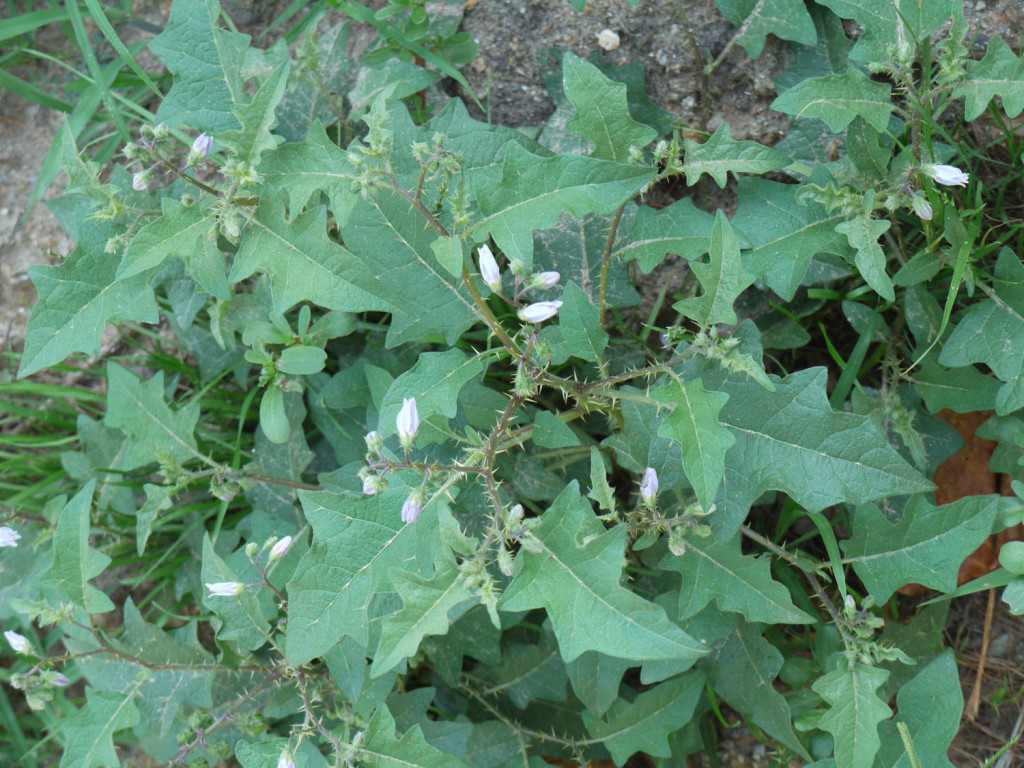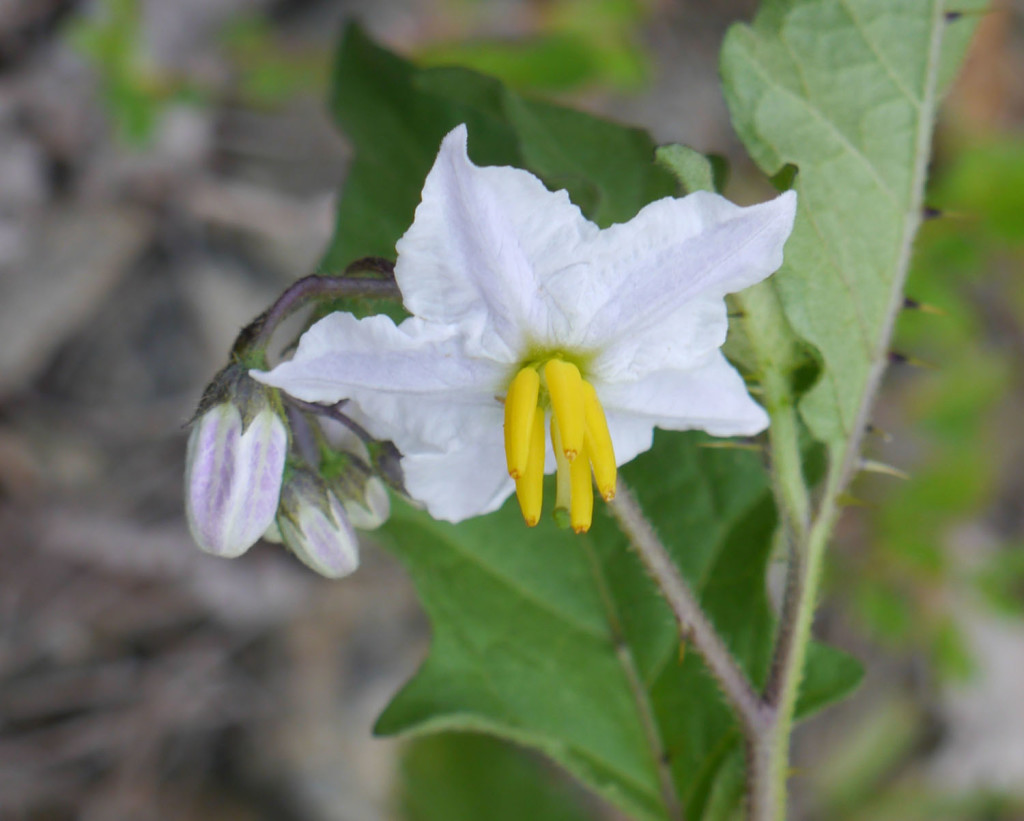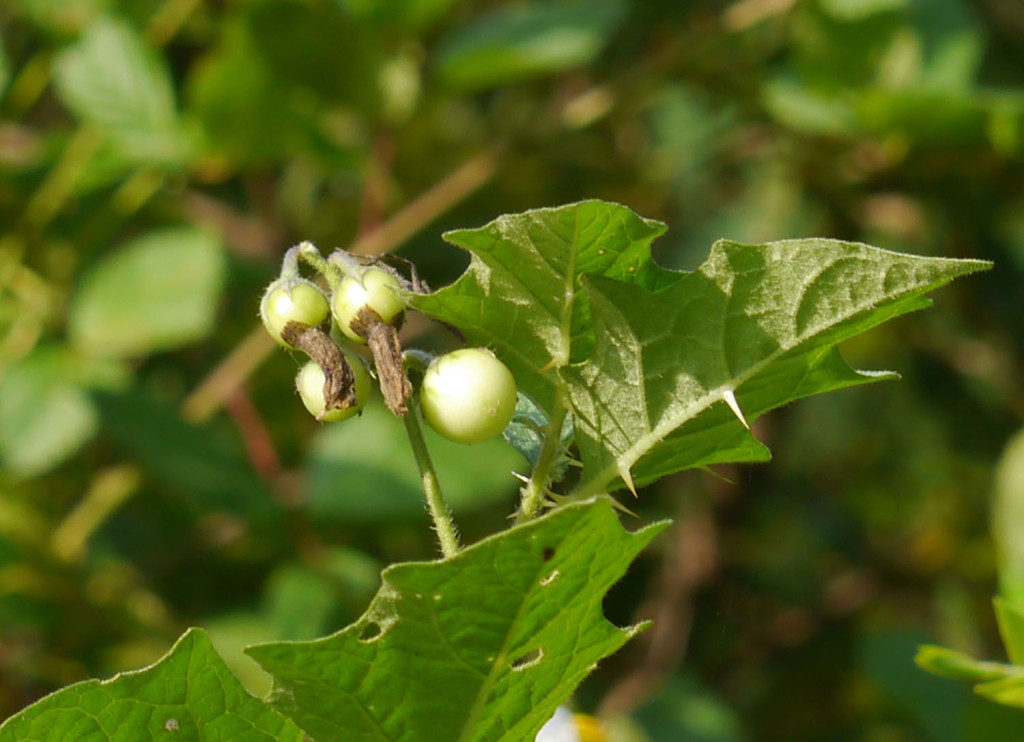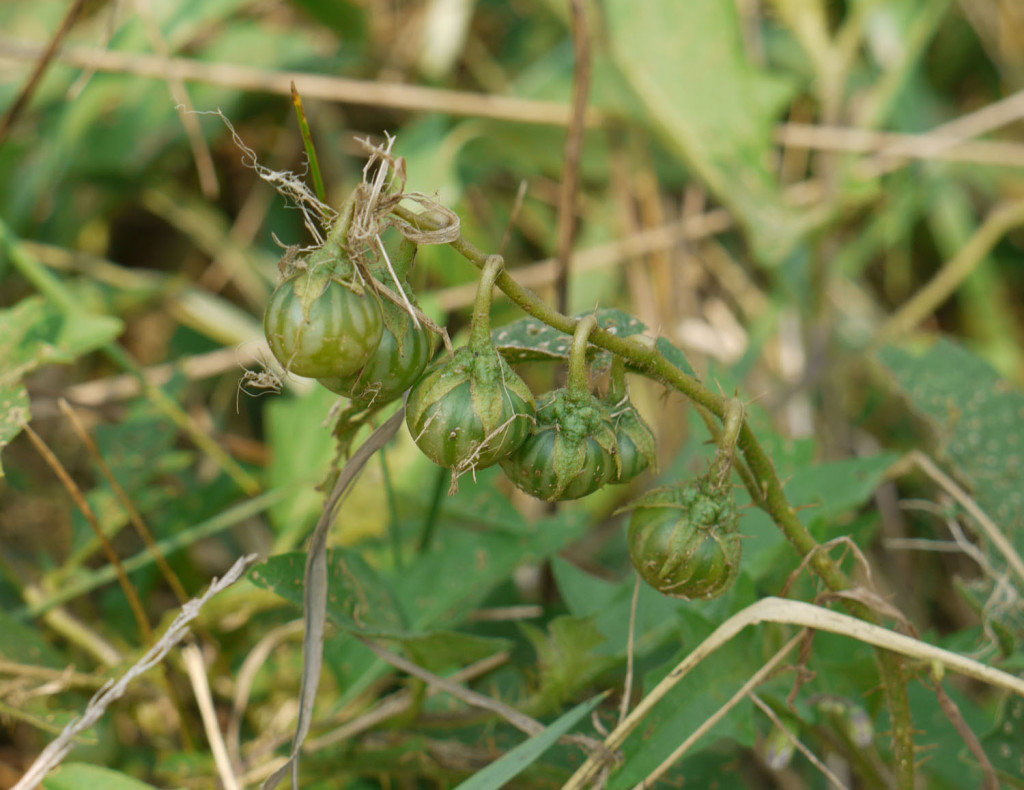This plant can be found throughout North America. It is considered “weedy” and is usually disliked by anyone who feels compelled to remove it from where it’s growing. When you can identify it, please leave a comment with both the common name and scientific name. Also share any personal connection (or disconnection?) you may have with the plant.
ANSWER (subsequently added to this post to facilitate the “search” function for these images): Horse nettle (Solanum carolinense)







Horse nettle!
Solanum carolinense, horse nettle
Great photos by the way!!!!
horse nettle 🙂
Horsenettle, Solanum carolinense. I have seen these flowers in blues and pinks as well as whites. They seem to vary quite a bit, though it may be largely a factor of age…Tomato or nightshade family.
I agree too…Solanum Carolinense
Yep. Me too. Horsenettle. Solanum caroinense
Horse Nettle
I remember as a kid sliding down a little dirt cliff where we used to find arrowheads, and being sorely interrupted by a horse nettle plant along the way!
Yes, indeed, this is Horse nettle (Solanum carolinense). Thanks, Jane, for your vivid (ouch!) memory.
Horse nettle. These reproduce by seed and root-sprouts. These weedy perenials are very difficult to remove. I have had the best luck by waiting until they have grown fairly large in July and then painting all the leaves with a 50-50 mixture of glyphosate and water. By late August smaller Horse nettle plants will root-sprout, that is when I give them another treatment. After a few years most of these nettles have disappeared.